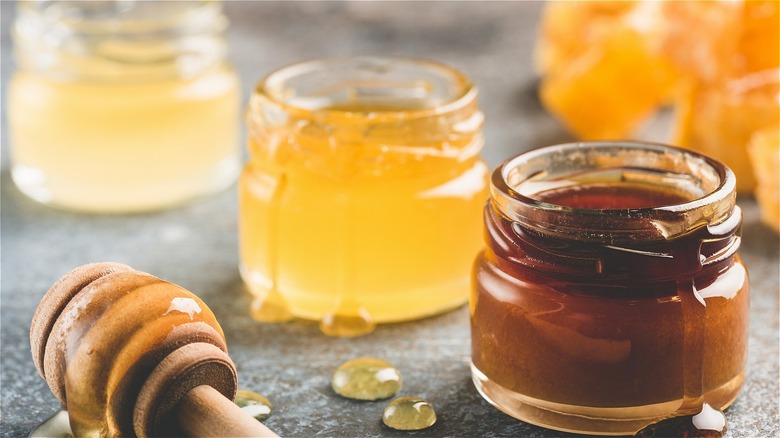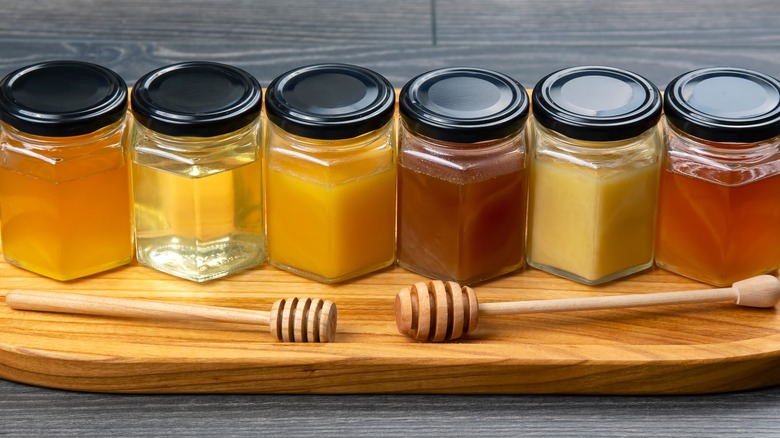Why Not All Honeys Are The Same Color
Understanding why not all honeys are the same color requires first understanding how honey is made. According to the U.S. Department of the Interior, there are 20,000 different species of bees across the world that serve important jobs as pollinators, but honeybees produce the largest quantities of honey. There are seven species of honeybees, all under the genus Apis, but bumblebees and stingless bees produce small amounts of honey as well (via World Atlas).
Almanac notes that bees prefer plants native to where their species of bee comes from because they "co-evolved together." Because bees can't see red, they will select flowers with the colors yellow, purple, blue, or white instead. Once a bee seeks out its preferred plant, they suck out the nectar. Some of the nectar is used immediately as fuel for the forager, and the rest is stored in the bee's stomach, where enzymes start to break the nectar down into simple sugars (via Keeping Backyard Bees). New Scientist explains that back at the hive, bees pass the nectar from mouth to mouth, and eventually "the foragers then pack the nectar into hexagon-shaped cells in the honeycomb that are made of beeswax." The bees fan the nectar, which promotes evaporation. When the percentage of water decreases to about 18%, the nectar has turned into honey.
Flower nectar determines honey color
There are many types of honey, and what makes them unique is the plant that the bees drank the nectar from. Much of what is available at the supermarket is heavily filtered and processed, which creates a more muted taste, according to PureWow. However, unfiltered raw honey can vary significantly in both taste and color, determined by the qualities of the flowers' nectar.
For example, orange blossom honey is golden in color and has a delicate floral taste with citrus undertones. In general, lighter honeys are more mild in flavor, while darker honeys are more bold. Common types of honey include clover, wildflower, acacia, and buckwheat. Acacia honey is actually made from black locust trees, also called false acacia, and almost transparent in color. Bees collect nectar from the tiny white flowers on the buckwheat grain to make buckwheat honey, which is rich in flavor and dark in color (via WebstaurantStore).
According to Slate, French bees once made blue honey after consuming the sugar waste from an M&M factory. Though novel, the honey was deemed inedible. Further, the fact that bees are turning to inorganic sources is troubling: It indicates that the environment is low on floral resources.
Not only is buying local honey culinarily interesting and delicious, but it is also important for local foodways. Cooking and baking with honey from your local area supports hardworking beekeepers, helps the nearby farms that benefit from a strong honey bee population, and demonstrates your commitment to sustainability (via SideChef).

